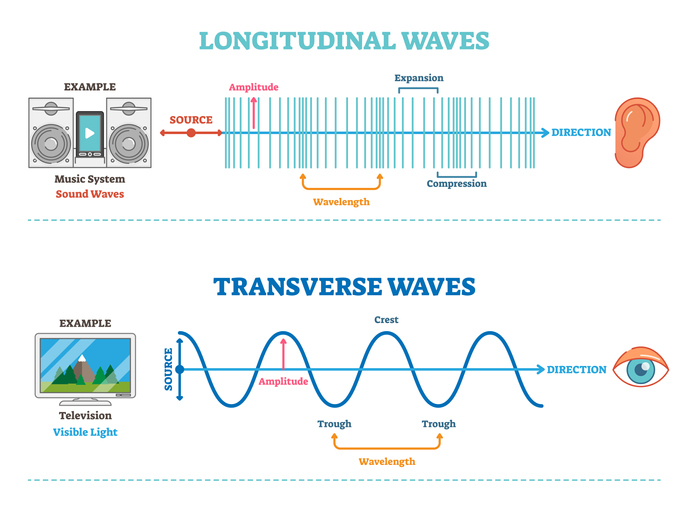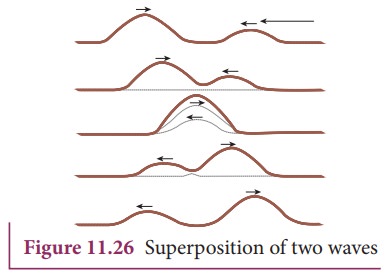Wave Motion and types of Waves
Wave MotionA wave is the transfer of energy and momentum, in form of disturbance, from one part of a medium to another without the actual transfer of particles of the medium from one point to anoth...

At any point of the medium, the combined effect is given by the principle of superposition.
This principle states that if at any point two waves of the same kind reach simultaneously, the resultant displacement at that point is the sum of the displacements due to the individual waves.
If y1, y2, y3, ........., yn are displacements at a point when n waves superpose each other.
Then the resultant displacement, y, at that point will be
y = y1 + y2 + y3 + ...... + yn
For example, we can tune our radio for a particular station even though different frequencies from different stations pass through the radio antenna. Using the superposition principle, it becomes possible to analyze a complex wave motion as the combination of simple waves.
The superposition principle holds true for all wave motions for which the equations governing them are linear.